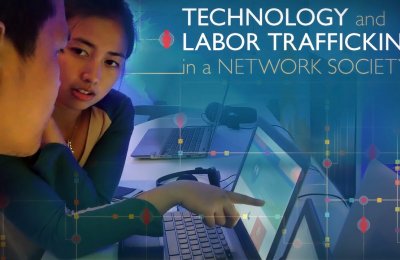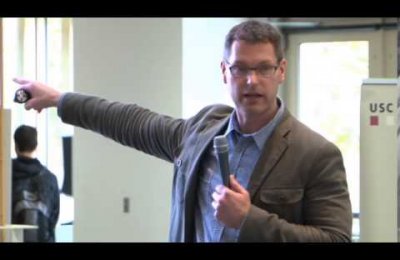By Alex Reed
Student Writer
What do a science journalist who writes about string theory, an art historian, and a numbers-crunching political scientist all have in common? Their disciplines depend upon successful pattern recognition.
Dean Ernest J. Wilson III welcomed Journalism Professor K.C. Cole and USC Dornsife Professors Nicholas Weller and Kate Flint on April 25 for a panel discussion on recognizing patterns and how that skill can help students become more competitive in the job market.
After speaking to employers in communications, media, entertainment and other fields, Dean Wilson and other USC Annenberg leaders learned that most employers are looking for people who can recognize and foresee trends within their field.
“They want people who have the skill and knowledge to be able to recognize patterns in the world before other people can recognize them, because that gives us a competitive advantage,” Dean Wilson said.
Dean Wilson added that, as a result, USC Annenberg encourages similar skills not only through the Annenberg Innovation Lab, but also through a new venture that hopes to incorporate interdisciplinary studies, which has also proven to be highly regarded by employers.
In a room so crowded that extra chairs were brought in by Annenberg staff, each panelist gave their own brief lecture on their understanding of pattern recognition and how it can be seen in their fields.
Weller, assistant professor of Political Science and International Relations, explained pattern recognition as taking and classifying information, while trying to “predict something that you haven’t seen.”
While he advised that people should be aware of uncertainty and the unknown, he also warned against false positives in predicting patterns.
“If we believe that we found patterns that we haven’t actually found and we change laws, we change institutions, we change our own behavior, we actually can hurt ourselves,” Weller said.
He gave the example of the “hot hand” in sports to explain how people can find false patterns, saying that although a basketball player can make 10 shots in a row, his making an 11th shot, while being a likely outcome, is not a pattern.
Weller’s comments segued into a discussion about innovation – and where innovation comes from.
“That’s something we have a much harder time wrapping our heads around. It’s easy to think of how to borrow from another discipline, and import and utilize,” he said. “The harder thing to figure out is: how do you fundamentally innovate within a discipline that’s different than borrowing from another discipline.”
Cole added to Weller’s “hot hand” example by noting that it comes up a lot in discussions of the job world.
“Somebody will give a great talk and then everybody will ignore that their record is actually pretty mediocre, [but] then somebody with a better record will give a mediocre talk,” said Cole. People often don’t realize “that the person who gave the mediocre talk is going to give a much better talk next time than the person who gave a great talk.”
Cole also discussed game theory and its role in the professional world, saying that people should strive to find “stable solutions” because creating a pattern out of being the person that is “going for the kill is not a good strategy.”
“Competition is not always the best way to survive,” Cole said. “Cooperation is equally important.”
Looking at pattern recognition from a completely different perspective, Provost Professor of English and Art History Flint observed patterns as they apply to artists, photographers, and writers.
Accompanied by a slideshow presentation of photographs and artwork, Flint explained that art allows people to think “about ways that patterns have been recorded.”
One way is through “artists and photographers who have chosen to locate, arrange, or mount certain patterns that they have found in the world in a way that has aesthetic significance,” Flint said.
From the discussion, students, as well as the faculty and staff in attendance, were able to see how ideas such as pattern recognition can apply to vastly different fields and consider how their fields will “intersect with other fields,” and also encourage interdisciplinary learning.
Finding new ways to promote pattern recognition and interdisciplinary studies is an effort by Dean Wilson to design programs and foster better teaching at USC Annenberg.
“The purpose [of the discussion] was to have comments and conversation so that when we design a whole course on [pattern recognition], students will be able to leave that course saying, ‘OK, now here’s how I can be more competitive,’” Dean Wilson said.
Pattern Recognition: What Employers Are Looking For in a Competitive Environment








